A Technical SEO Guide To Improve Your Site Health


Maintaining the health of your website is essential for achieving better search engine rankings and improving your website’s visibility. You need to consider several factors when optimizing your website for search engines, and one of the most important is making sure that your site is healthy.
This article will discuss some of these common site health issues.
Pages returning 4XX status code
When a web page returns a 4XX error, search engine robots or crawlers cannot access the page. These 4XX errors are usually due to a broken link or improper URL. Broken web pages can directly affect the search engine rankings for that specific page and overall site rankings. Your traffic will also be negatively affected when your site rankings are negatively affected.
What to do
Many tools help identify broken links or 4XX pages on your website. Using Google Search Console, SEMrush, or a WordPress plugin, you can determine which pages or links are broken and correct the error by pointing to a new URL or the correct URL.
Duplicate content issues
When two web pages have 80% or more identical content, they are considered duplicates.
Duplication of content can affect your overall site’s performance. Google doesn’t know which content to show and could not display the page you wish to show up in search engines. Google also could downgrade or ban both pages as it could be seen as an attempt to “game” the search engines.
What to do
You can fix duplicate content issues by:
- Adding a rel= “canonical” link to one of the duplicate pages. This lets the search engine know which is the preferred page to display.
- You can use 301 redirects to point from one page to another, letting Google know which page is the primary source.
- Ensure proper pagination by using a rel=”next” and a rel=”prev” link attribute.
- Adjust the content on one of the pages to be unique.
Here are a couple of articles from Google that dive a bit deeper into the issues. “Duplicate content” and “Consolidate duplicate URLs.”
Pages that are slow to load
Page loading speed is a critical search engine factor. Pages must load as fast as possible. Fast loading times create better user experiences and are rewarded by Google leading to higher rankings in search engines.
What to do
First, use a page speed insights tool such as Google’s PageSpeed Insights, GTmetrix, and Pingdom to analyze how fast your page is loading. These tools provide insight into what issues are causing slow loading times. Condensing the code through minification, removing any unnecessary code, and optimizing images are very common ways to reduce the load time of a page.
Low text-HTML ratio
Low text to HTML ratio refers to your page having less than 10% text compared to the overall HTML of the page. Search engines reward pages with more content.
What to do
Fixing low text to HTML ratio comes in two parts. The first part has to do with the content. Remove thin content pages or bolster the content focusing on quality and depth. The second part should focus on removing any unnecessary code and HTML structure. This can often be difficult due to page builders that have bloated code. When in doubt, simplify.
Unminified JavaScript and CSS files
Removing any unnecessary lines, white space, and comments from the source code is called minification.
Minifying JavaScript and CSS files make the overall size smaller, increasing page speed and creating a better user experience. Search engines reward quality user experiences.
Check out this Google article to learn more.
What to do
Minify your JavaScript and CSS files using a plugin (W3 Total Cache, WP Rocket) or service like Cloudflare or hiring a website developer to rework the code line by line.
Low word count
Low word count runs parallel with low text to HTML ratio. If there is not enough content on a page (less than 200 words), Google doesn’t have enough content to place your page high in the search engines. Quality and depth of information are critical to ranking high. Avoid the fluff!
What to do
Revisit your thin content pages with low word count and bolster the content where applicable. What sections can you add to and build out more? Can you elaborate on any key points? Remember to keep in mind the keywords you are aiming to rank for.
Too much text within the title tags
Your titles should be concise and specific. When your page titles have more than 70 characters, they get “the chop.” Google will truncate the titles, only displaying a small portion of the title. Your titles are the first opportunity to connect with your audience. When your audience searches for something, they will scan the title and descriptions of the search engine results and click through on what seems to fit their search needs–keep this in mind when writing titles! Here is more about this topic in this Google article.
What to do
Write your page title as concise and specific as you can within 70 characters. Use a plugin like Yoast SEO to help with this.
Broken external links & images
When you link off your website to a resource of value and your users follow those links only to hit a 404 page, this is a bad experience. Likewise, when you have an image that should be displayed on your site but instead displays the broken image icon, this too is a bad user experience. Having too many of these broken external links and images will reduce your search engine rankings.
What to do
Using tools like Google search console, AHREFs, or SEMrush can help identify these broken links and provide you with quick access to fix them. In some cases, you simply need to update the proper URL, while other times, you need to remove the link or notify the external link website about the broken link.
Using HTTP vs HTTPS
HTTP used to be the norm. Now, it’s HTTPS. Occasionally links will still point to the older version of websites using HTTP. Search engines like to see the consistency of HTTPS.
What to do
Make sure to use only HTTPS for all links. Google Search Console is a handy way to ensure this is being done correctly.
Using h1 heading tag for each page
As a technical SEO agency, we see this one a bunch. Websites are often built using a set of styles for each heading (h1-h6). These heading tags have a specified visual representation associated with them. That being the case, we find multiple h1 heading tags used on a single page.
When a <h1> tag is empty or missing, search engines may rank your page lower than they would otherwise if you specified an h1 using quality search terms.
What to do
Ensure you are only using one h1 heading tag that includes quality keywords.
Duplicate h1 heading tags and title tags
Google is forever looking for unique, quality content. Similar to the last issue discussed, you should avoid boilerplate heading tags and duplicate h1 and title tags. Any shortcuts typically lead to lower search rankings. This Google article helps get more specific about SEO titles and heading tags.
What to do
Write a unique <title> and <h1> for each page on your site.
Missing meta descriptions
Search engines use Meta descriptions to display your page’s description on the search engine results page. A good meta description will help users know what your page is about and is the first chance to connect with your audience. If your page doesn’t have a meta description tag set, Google typically will show the first sentence of your page content, which might not be relevant or appealing to users.
What to do
Craft quality, unique meta descriptions for each page on your site using keywords that have search volume and are relevant to your page.
Don’t have alt attributes set on images
Search engines look at Alt attributes within <img> tags to better identify what the image is about. This is an accessibility factor for visually impaired users and leads to a better user experience when correctly done. Missing Alt tags can lead to a lower search results ranking. Here are some Google articles talking about this issue. Google Image Publishing Guidelines and Using ALT attributes smartly.
What to do
Make sure you have a unique alt-tag set for each image on your page. Avoid keyword stuffing by adding too many search terms into the alt tag. Use specificity and context about the image to enhance the user experience.
Using underscores in the URL
Avoid the use of underscores as words separators in your URL structure because search engines may not interpret them correctly and consider them part of a word.
You should use hyphens to separate words in your URLs as this makes it easy for the search engines to understand further what the page content is about. Here is a Google article about this topic.
What to do
When creating new pages, avoid underscores in the URLs. If underscores already exist on your site, you can change these but make sure to set up a 301 redirect to let the search engines know where your page resides. If your page already ranks high and includes underscores in the URL, you may not want to change the URL.
Sitemap.xml not found
Your website should include a sitemap.xml file accessible to search engine crawlers. Having a sitemap.xml file can help identify which pages should be indexed by the search engines, leading to better search rankings.
What to do
If you have a WordPress website, use a plugin to build a sitemap.xml file (Yoast SEO) automatically. Once you have this created, let Google know where it is by submitting your sitemap through Google Search Console.
Wrapping it up!
Your website health consists of a myriad of items to consider. These should be monitored weekly to ensure your search engine rankings continue to climb.
If you need help with technical SEO for your website, give us a shout. We’d love to help! If you want more specifics into SEO, check out our critical SEO best practices you don’t want to ignore.
See how WEDO can help
We specialize in Asheville NC SEO & Hendersonville NC SEO
Fully transparent. Rapid testing. Growth minded.
Fully transparent. Rapid testing. Growth minded.
Schedule your 15-minute free consultation
WE•DO is ready to put our minds to work to drive your growth.


